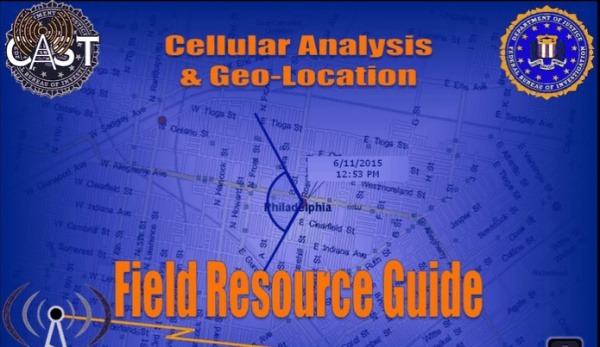The 139-page presentation, dated 2019, was created by the FBI Cellular Analytics Team.

Motherboard reporters were able to read the FBI documents, which describe in unusual detail how the bureau and other law enforcement agencies obtain information from telecommunications companies about the location of mobile devices.
Most of the information presented in the documents is already known to the general public, for example, how law enforcement agencies can obtain data from telecom operators' subscribers using special court orders. However, the docs also shed light on exactly what information each operator collects and how long certain types of data are retained. Moreover, they provide screenshots of the tools the FBI provides to law enforcement agencies throughout the United States for analyzing data from cellular base stations.
The documents were provided to the publication by Ryan Shapiro, executive director of the non-profit organization Property of the People, who received them upon request for information from open sources. The 139-page presentation, dated 2019, was created by the FBI's Cellular Analysis Survey Team (CAST).
According to the presentation, CAST is helping the FBI, as well as federal and local law enforcement and judicial authorities, in forensic data on phone calls from base stations. In particular, the team is engaged in obtaining data from telecommunications companies, analyzing data from base stations showing which phones were in a specified location at a specified time, examining testimony of witnesses and verifying the actual coverage of base stations.
"When necessary, CAST uses industry standard equipment to determine the true geographic coverage of the cellular sector," the presentation said.
CAST provides law enforcement with its own phone data visualization software tool called CASTViz for free.
"CASTViz can quickly and accurately record call data and base station data for lead generation and investigations," the presentation said.
The presentation even contains screenshots of instructions for using CASTViz.
The document explains how requests are made to obtain disposable phone location data from virtual carriers (carriers using the existing infrastructure of another carrier, but selling services under their own brand). It also describes how to get information from the General Motors OnStar vehicle system, and presents the cost of some of the data.
In terms of the period during which telecom operators store phone call data, AT&T is 7 years, T-Mobile is 2 years, and Verizon is 1 year. AT&T stores web browsing data for 1 year.

Motherboard reporters were able to read the FBI documents, which describe in unusual detail how the bureau and other law enforcement agencies obtain information from telecommunications companies about the location of mobile devices.
Most of the information presented in the documents is already known to the general public, for example, how law enforcement agencies can obtain data from telecom operators' subscribers using special court orders. However, the docs also shed light on exactly what information each operator collects and how long certain types of data are retained. Moreover, they provide screenshots of the tools the FBI provides to law enforcement agencies throughout the United States for analyzing data from cellular base stations.
The documents were provided to the publication by Ryan Shapiro, executive director of the non-profit organization Property of the People, who received them upon request for information from open sources. The 139-page presentation, dated 2019, was created by the FBI's Cellular Analysis Survey Team (CAST).
According to the presentation, CAST is helping the FBI, as well as federal and local law enforcement and judicial authorities, in forensic data on phone calls from base stations. In particular, the team is engaged in obtaining data from telecommunications companies, analyzing data from base stations showing which phones were in a specified location at a specified time, examining testimony of witnesses and verifying the actual coverage of base stations.
"When necessary, CAST uses industry standard equipment to determine the true geographic coverage of the cellular sector," the presentation said.
CAST provides law enforcement with its own phone data visualization software tool called CASTViz for free.
"CASTViz can quickly and accurately record call data and base station data for lead generation and investigations," the presentation said.
The presentation even contains screenshots of instructions for using CASTViz.
The document explains how requests are made to obtain disposable phone location data from virtual carriers (carriers using the existing infrastructure of another carrier, but selling services under their own brand). It also describes how to get information from the General Motors OnStar vehicle system, and presents the cost of some of the data.
In terms of the period during which telecom operators store phone call data, AT&T is 7 years, T-Mobile is 2 years, and Verizon is 1 year. AT&T stores web browsing data for 1 year.
